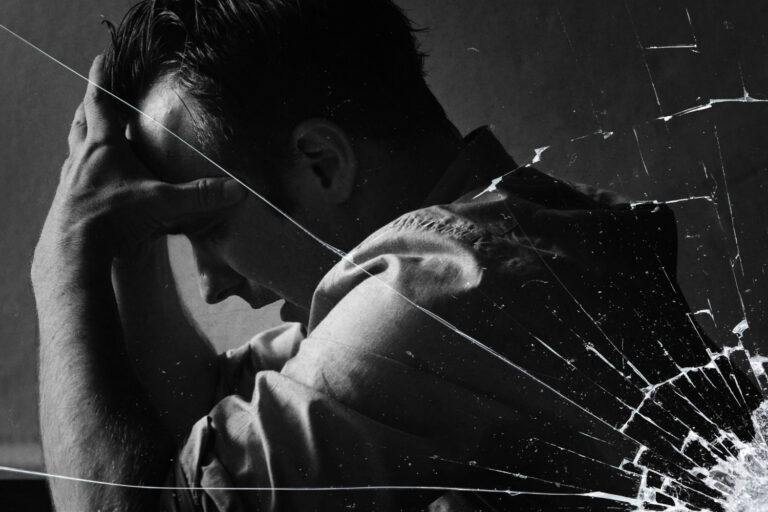Steps in Criminal Proceedings
Step 1
Understanding Hate Crime and (Violent) Extremism
Hate Crime in Hungary
Under Hungarian criminal law, hate crimes are defined as a separate, special offence called ‘violence against a member of a community’.
It is committed if the offender displays anti-social behaviour or assaults another person due to their real or perceived affiliation with a national, ethnic, racial, or religious group, or of any other social group, in particular on the grounds of disability, gender identity, or sexual orientation.
Due to the open-ended list of protected groups, practically any member of any kind of distinct social group can be considered a possible victim of hate crimes.
Aggravating circumstances are present if the perpetrator is armed, causes a significant injury, or the crime is committed by a group or criminal enterprise. Preparation for a hate crime is also punishable.

Provisions of the Criminal Code on manslaughter, physical assault, violation of personal liberty, defamation, and unlawful detention indicate base motives as aggravating circumstances. This might also include biased motivation.
In the case of other offenses, bias motivation might be taken into consideration as an aggravating circumstance by the judge based on his/her discretion.
In addition, the most extreme form of hate speech is outlawed by the criminal legal provision on the ‘incitement against a community’, i.e., incitement liable to provoke violent acts.
Protected groups
The protected groups are any national, ethnic, racial, or religious groups, or any distinct social groups, especially on the grounds of disability, gender identity, or sexual orientation.
A separate provision was created on ‘illegal organisation of public security activities’ to address the phenomenon of illegal patrolling based on bias motivation.
Any person who is engaged in organising activities for maintaining public security, without any statutory authorization, or who is engaged in organising activities pretending to maintain public security, is guilty of a misdemeanour.
Step 2
Reporting the Crime
Where to report the crime
A complaint may be filed with the prosecution services or the police.
- The victim has the right to present evidence, to submit a motion, and to comment on the case file in connection with the offence concerning them, to be informed of their rights and obligations in criminal proceedings, and to seek assistance (in legal service or interpretation).
- The victim has the right to state at any time what physical or mental harm they have suffered as a result of the offence, what material damage they have suffered, and whether they wish the perpetrator to be found guilty and punished.
- The victim has the right to declare at any time that they no longer wish to exercise their rights as a victim in the proceedings.
At the same time, hate crimes are offences that must be prosecuted ex officio. The victim of a violent crime may request the authority to call upon the defendant to refrain from arbitrary interference in their private life or daily activities.

Bias Motivation and Police Obligations
In hate crime cases, whether the police and the prosecution (and later the court) pay attention to the bias motivation is crucial. The police are obliged to consider the possible presence of a bias motive during their conduct in all criminal cases.
If there is a suspicion of bias in connection with the crime, the investigating authority must clarify the ascertainability of the bias motive during the investigation.
The police shall inform victims of intentional crimes of violence against the person, at the time of reporting the crime, if the victim reports the crime in person, otherwise at the time of the first interview of the victim as a witness about victim support services, and about the possibility of receiving support.
Step 3
Police Investigation
What happens after reporting
The prosecutor’s office or the police shall, within three working days of receiving a report of a criminal offence, examine whether the investigation of the case should be ordered, supplemented or transferred to another investigative authority.
Since 2019, a ‘mentor’ has been appointed at every police headquarters who is the local expert on hate crimes.
This third tier complements the earlier structure, consisting of the national coordinator of the Special Network and the county coordinators. In case of hate crimes, the special hate crime officer of the respective county police headquarters supervises the investigation.

Police duties in hate crime cases
The police officer must consider the possible presence of a bias motive in all criminal offences.
If there is a suspicion of bias in connection with the offence, the investigating authority must pay due attention to ascertainability of the bias in the investigation of the facts.
The police officer taking action must communicate with the victim in a calm, objective, and professional manner, in support of the victim.
The police officer must not display personal value judgements about the victim’s behaviour, culture, origin, or community, and must refrain from using words and expressions that are stereotypical, prejudiced, or that suggest blame for the victim.
The investigator shall:
- Cooperate with other law enforcement agencies to identify the characteristics of the hate crime and the possible involvement of extremist groups, conducting open-source data collection, as appropriate, regarding the suspect’s prejudice;
- Collect data on the suspect’s relationship with the community he or she is attacking in the suspect’s place of residence and circle of acquaintances and take measures to document and, if necessary, seize any evidence in the suspect’s possession that may support the suspect’s possible bias motivation.
Victims’ rights during the investigation
During the criminal proceedings, the police officer shall inform the victim about the course of the investigation and the possibilities of contacting the investigating authority, taking into account the special needs of the victim.
The victim may be present at various investigative acts, e.g., at the interview of the expert or at the inspection. The notification of the victim may be waived only exceptionally, if the urgency of the procedural act justifies this or if the protection of a person requiring special treatment requires it.
The victim may lodge a complaint against the decision of the prosecution services or the investigating police at the prosecutor’s office or police headquarters that issued the decision within eight days of the notification. The victim is entitled to present evidence, to submit a motion, and to make comments.
As a result of the investigation, the proceedings may be suspended, terminated, or charges may be pressed.

Step 4
Public Prosecutor’s Role
The public prosecutor’s office has supervisory powers, including referring investigations or complaints to the competent investigatory authority:
→ It verifies the legality of the investigation, alters or annuls decisions contrary to law.
→ It can establish the unlawfulness of a procedural act and demand that the investigating authority remedy the unlawful actions.
The prosecutor can:
- Authorise procedural actions, make supervisory decisions over the police’s decisions. The prosecutor can attend procedural measures and request access to the investigation files.
- Take control measures, instruct authorities to perform actions, prohibit certain procedural measures, alter decisions, order the investigating authority to make decisions, and require reports about investigative actions.
- The prosecutors have the authority to investigate autonomously, and the performance of their procedural act may be prohibited only by the senior prosecutor of the respective prosecutor’s office.
Like in the case of police investigation, the victim may lodge a complaint against the decision of the prosecution services at the prosecutor’s office that issued the decision within eight days of the notification. The victim is entitled to present evidence, to submit a motion, and to make comments.
The prosecutor can authorise procedural actions, make supervisory decisions over the police’s decisions. The prosecutor can attend procedural measures and request access to the investigation files.
They can also take control measures, instruct authorities to perform actions, prohibit certain procedural measures, alter decisions, order the investigating authority to make decisions, and require reports about investigative actions.
Step 5
Court Proceedings
What Happens in Court and the Victim’s Role
The role of the victim is secondary to that of the prosecutor, with no right of appeal, no right of review, or to bring a motion for a review or retrial.
The victim has the right to present evidence, to make motions and observations, and is usually heard as a first witness at the trial hearing.
The victim is entitled to be present at the trial hearings and at the procedural measures provided for by law, to ask questions as provided for by law, and may intervene during the pleadings.
